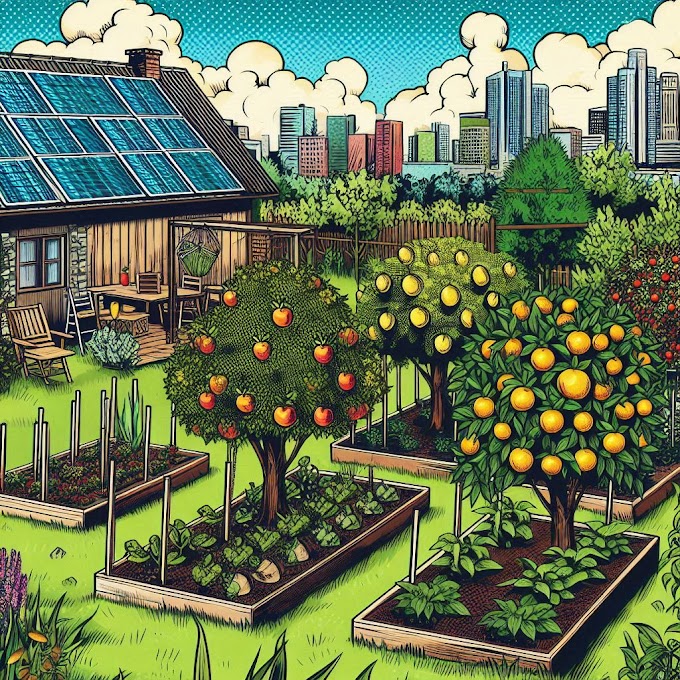Essential Medicinal Herbs for Your Survival Garden: Building a Natural Pharmacy for Health and Wellness
In times of crisis or emergency, having access to medicinal herbs can be invaluable for maintaining health, treating minor ailments, and supporting overall well-being. By cultivating a diverse selection of medicinal herbs in your survival garden, you can create a natural pharmacy to address common health concerns and promote resilience and self-sufficiency. In this article, we'll explore some essential medicinal herbs to grow in your survival garden, along with their health benefits and tips for successful cultivation.
1. Lavender:
- Health Benefits: Lavender is prized for its soothing aroma and medicinal properties. It has calming and sedative effects, making it useful for promoting relaxation, reducing stress and anxiety, and improving sleep quality. Lavender also has anti-inflammatory and antiseptic properties, making it beneficial for treating minor burns, insect bites, and skin irritations.
- Cultivation Tips: Lavender thrives in sunny, well-drained soil and requires minimal maintenance once established. Plant lavender in a sunny spot in your garden or in containers, and provide occasional watering during dry periods. Prune lavender plants regularly to promote bushy growth and abundant flowering.
2. Peppermint:
- Health Benefits: Peppermint is known for its refreshing flavor and medicinal properties. It has antispasmodic and carminative effects, making it effective for relieving digestive issues such as indigestion, bloating, gas, and stomach cramps. Peppermint also has analgesic and anti-inflammatory properties, making it useful for alleviating headaches, muscle pain, and tension.
- Cultivation Tips: Peppermint is a vigorous grower that thrives in moist, well-drained soil and partial shade. Plant peppermint in containers or in a designated area of your garden to prevent it from spreading and overtaking other plants. Harvest peppermint leaves as needed for fresh use or drying for long-term storage.
3. Calendula:
- Health Benefits: Calendula, also known as marigold, is prized for its vibrant flowers and medicinal properties. It has anti-inflammatory, antimicrobial, and antifungal properties, making it beneficial for treating wounds, cuts, bruises, and skin infections. Calendula also has soothing and healing effects on irritated or inflamed skin, making it a common ingredient in topical ointments, salves, and creams.
- Cultivation Tips: Calendula is an easy-to-grow annual herb that thrives in full sun and well-drained soil. Plant calendula seeds directly in the garden or in containers in early spring or fall. Deadhead spent flowers regularly to promote continuous blooming and harvest calendula flowers for fresh use or drying.
4. Echinacea:
- Health Benefits: Echinacea, also known as purple coneflower, is prized for its immune-boosting properties. It has antiviral, antibacterial, and anti-inflammatory effects, making it useful for preventing and treating colds, flu, and respiratory infections. Echinacea also supports overall immune function and helps the body resist infections and recover more quickly from illness.
- Cultivation Tips: Echinacea is a hardy perennial herb that thrives in full sun to partial shade and well-drained soil. Plant echinacea roots or seedlings in the garden in spring or fall, spacing them 12 to 18 inches apart. Harvest echinacea flowers, leaves, and roots for fresh use or drying when the plant is in full bloom.
5. Chamomile:
- Health Benefits: Chamomile is renowned for its calming and soothing properties. It has mild sedative effects, making it effective for promoting relaxation, reducing stress and anxiety, and improving sleep quality. Chamomile also has anti-inflammatory, antispasmodic, and digestive properties, making it beneficial for treating gastrointestinal issues such as indigestion, bloating, and nausea.
- Cultivation Tips: Chamomile is an easy-to-grow annual or perennial herb that thrives in full sun and well-drained soil. Plant chamomile seeds directly in the garden or in containers in early spring or fall. Harvest chamomile flowers for fresh use or drying when the petals are fully open.
6. Thyme:
- Health Benefits: Thyme is prized for its culinary and medicinal properties. It has antiseptic, antimicrobial, and expectorant effects, making it useful for treating respiratory infections, coughs, and sore throats. Thyme also has digestive and carminative properties, making it beneficial for relieving indigestion, bloating, and gas.
- Cultivation Tips: Thyme is a hardy perennial herb that thrives in full sun and well-drained soil. Plant thyme seedlings or cuttings in the garden or in containers in spring or fall. Harvest thyme leaves and stems for fresh use or drying throughout the growing season.
7. Rosemary:
- Health Benefits: Rosemary is prized for its aromatic flavor and medicinal properties. It has antioxidant, anti-inflammatory, and antimicrobial effects, making it beneficial for supporting immune function, improving digestion, and reducing inflammation. Rosemary also has cognitive-enhancing effects, improving memory, concentration, and mental clarity.
- Cultivation Tips: Rosemary is a woody perennial herb that thrives in full sun and well-drained soil. Plant rosemary seedlings or cuttings in the garden or in containers in spring or fall. Harvest rosemary leaves and stems for fresh use or drying throughout the growing season.
Cultivating medicinal herbs in your survival garden is a proactive and empowering way to enhance health, wellness, and resilience. By growing herbs such as lavender, peppermint, calendula, echinacea, chamomile, thyme, and rosemary, you can create a natural pharmacy to address common health concerns and promote self-sufficiency and self-care in times of need.
Tips for Growing Medicinal Herbs:
1. Choose herbs with specific health benefits that address your individual needs and concerns.
2. Provide optimal growing conditions, including sunlight, soil, water, and nutrients, to promote vigorous growth and medicinal potency.
3. Harvest herbs at the peak of their medicinal potency, usually when flowers or leaves are fully mature but before they begin to decline.
4. Preserve harvested herbs through drying, infusing in oils or vinegars, or making tinctures, teas, or salves for long-term storage and use.
5. Experiment with different preparations and applications of medicinal herbs to find what works best for you and your family's health and wellness needs.












